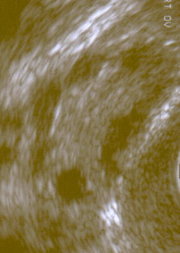MYTH: Polycystic ovarian syndrome (PCOS) is a simple but rare hormone disorder.
FACT: A complicated hormone disorder, PCOS is characterized by enlarged cystic ovaries, excess male hormones (androgens), irregular or absent menstrual cycles, infertility, acne, excess body and facial hair, obesity, male-pattern baldness, and insulin resistance. Affecting 5% to 10% of all women of childbearing age, PCOS is one of the most common hormone disorders among women in this age group.
MYTH: Biopsy, laparoscopy, and radiologic studies of the ovaries are necessary for a definitive diagnosis.
FACT: A reliable diagnosis of PCOS can be based on ultrasound, lab values, and symptoms. A primary care provider may also order follicle-stimulating hormone, luteinizing hormone, thyroid-stimulating hormone, prolactin, dihydroepiandrosterone, and testosterone levels to help determine the exact hormone imbalance. Radiologic studies are done if the lab values are inconclusive.
MYTH: The syndrome has no long-term health consequences.
FACT: Women with PCOS are seven times more likely to have a myocardial infarction from atherosclerosis linked to diabetes, insulin resistance, hyperinsulinism, hyperlipidemia, and obesity. Patients also have a higher risk of breast cancer, due to increased estrogen levels over time, and endometrial cancer, due to lack of regular menses.
MYTH: The goal of treatment is to rid the ovaries of the cysts.
FACT: If the patient is insulin resistant, the goal of treatment is to reduce insulin resistance and ovarian androgen production. New studies show oral insulin-- sensitizing medications, such as metformin, increase ovulation. Oral contraceptives may be prescribed to create regular menstrual cycles and balance hormones. Ovarian wedge resection may be performed as a surgical treatment of last resort
BY BECKY LIEN MUNSON, RN
Becky Lien Munson is nursing supervisor at the Washington School for the Deaf in Vancouver, Wash. Selected references for this article are available on request.
Copyright Springhouse Corporation Nov 2002
Provided by ProQuest Information and Learning Company. All rights Reserved



